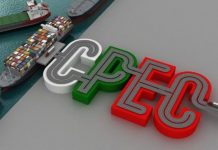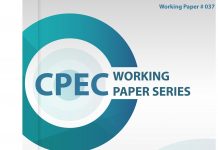The paper look into the effect of China-Pakistan Economic Corridor (CPEC) on the local urban and socio-economic set up in Pakistan with special reference to spatial planning of urban areas and Special Economic Zones (SEZs). For the analysis CA-Markov model and Fuzzy membership technique has been adopted on area selected on CPEC route and one special economic zone named Rashkai-SEZ situated in Khyber Pakhtunkhwa. The analysis shows that population density at Eastern route of CPEC is greater than central and western route. Especially at western route, rare population settlement and less density is shown on maps. For the micro level analysis, we use Kot-Momin as study area. The analysis shows a visible growth pattern of settlement in surrounding parts of CPEC route of this area will be observed. The growth rate shows an enhancement of 2% in 2015 to 16% in 2030. The growth pattern observed during the said period shows that area grew from 20 km2 to 144 km2 by 2030, while demographic analysis of Raskai-SEZ observed a growth pattern during the 2015-2030 that shows study area grew from 27 km2 to 104 km2 by 2030.
Key Words: Spatial planning, CA-Markov model, CPEC, Special Economic Zones
Dr. Kanwal Zahra
Assistant Professor,
University of Central Punjab Lahore
Dr. Saleem Janjua
Head of Policy,
Centre of Excellence for CPEC
Numra Asif
Research Assistant
Centre of Excellence for CPEC

 中文
中文 Urdu
Urdu












